Clancy Tucker's Blog, page 82
May 6, 2020
7 May 2020 - TOBI CYPRIAN OBARO - GUEST WRITER, EDITOR AND REFORMER

TOBI CYPRIAN OBARO - GUEST WRITER, EDITOR& REFORMER
G'day folks,
Today, I interview my second guest from Nigeria, and ask him some hard questions.
Welcome, Tobi ...
1. Tell us about you and what you do.
Hey! Hope you are doing good?
I am Tobi Cyprian Obaro a native of Delta state Nigeria.
I am a Christian reformer and Freelance copywriter.
2. What was the happiest moment of your life?
Don’t have any. But I understood what happiness feels like when I got my first pay cheque.
3. What was the saddest moment?
Childhood. Was constantly tormented in dreams.
4. What surprised you most?
My conversion to the Christian faith.
5. What was your greatest disappointment?
Spending 6 years in the university to attain a 4-year degree certificate.
6. Who did you misjudge? Why?
A friend of mine in high school.
Couldn’t comprehend his kind of being at the time.
7. What or who was your biggest challenge?
What: Building my writing career.
Who: Creating a personal relationship with God
8. What has been your biggest regret?
Growing up with a mindset built to criticize than to listen.
9. What would be your dying comment? Why?
Health to the world.
Because I want my kids to enjoy a healthy world.

10. Who or what stunned you the most?
Marijuana
11. What would you like written on your tombstone? Why?
Rainy Dreams
Because that’s what the world offered me.
12. Who would you rather have not met? Why?
No one for now.
13. Who were you most envious of? Why?
A friend of mine in university.
He was a legend at his craft.
14. Who did you forgive – for doing something you never thought you’d forgive?
My First Love.
15. What was your greatest moment in your life?
Don’t know yet.
16. What is your greatest achievement?
Being able to pen words to paper from a concept true to my being.
17. What personal traits would you like to have in your next life?
Humility.
18. What advice would you give to world leaders?
Lead.
19. What advice would you give to parents today?
Build a world that’s conducive for your kids.
20. Who would you choose to be stuck on a desert island with?
My Girlfriend.

21. Have any heroes? Why? Who?
Dalia lama and CS Lewis
They commune in ways I can easily comprehend.
22. What are the greatest legacies you will leave behind?
Making – nigeria –Nigeria.
23. What’s lacking in the world today?
Health.
24. Any pearls of wisdom for the rest of us?
Commune in your own voice.
25. What would be the last sentence you ever write?
I don’t know. But am quite certain it would come as a surprise to the world.
26. What inspires you most?
The day-to-day life.
27. Who or what made you laugh the most?
My mum.
28. What would be your top three chosen careers in your next life?
Law, Writing and Philosophical study.
29. What is your prime focus in life today?
To build a life in line with God’s plan.
30. Do you have any fear of doing something wrong?
Yeah! Lots of them.
31. If or when you reflect on your past, can you identify any world event, saying or movie that you believe had a significant impact on you?
They are in their numbers but somehow this one comes to mind.
‘‘If you want to be
What you want to be
Know what you want to be
To be who you want to be’’.
Got it from an Indian movie.

32. Do you think one can live a purposeful life without knowing the meaning of life?
No.
33. From your perspective - what is the way forward for the world?
Building moral ethics.
34. Imagine that you were given a chance to live again, what will you do first and what will you do differently?
I would say thanks for opportunity. Roll a blunt then read the memo I left behind in my past life.
35. Do you have a bucket list? Tell us more.
No, I don’t.
36. Any great claims to fame?
If leaving comfortable with my family would suffice, then Yeah.
37. What makes you happy?
Praying, reading, writing and smoking.
38. Anything you’d like to add?
Thanks for the opportunity, Clancy.

WEBSITE

Clancy's comment: Thank you for being so honest, Tobi. Stay well, and keep writing.
I'm ...


Published on May 06, 2020 15:24
May 5, 2020
6 May 2020 - A COLLECTION OF LOST ENGLISH WORDS

A COLLECTION OF LOST ENGLISH WORDS
G'day folks,
Welcome to some English words that have slipped through the cracks and disappeared.
canitude n 1656 -1742 greyness; hoariness; whiteness The first snowfall of the year gave the field a pleasant canitude.
caprizant adj 1730 -1736 of the pulse, uneven or irregular While he hadn't had a full-blown heart attack, his pulse was very caprizant.
casitive adj 1652 -1652 having grammatical cases The casitive nature of Finnish and Hungarian makes them difficult to learn.
castaldy n 1623 -1800 stewardship His castaldy over the manor was dependent on his good relations with the lord's sons.
cecograph n 1851 -1874 writing device for the blind The development of computers has made the cecograph entirely obsolete.
celeberrimous adj 1768 -1768 very or most highly celebrated Her celeberrimous accomplishments were lauded by her colleagues.
celeripedean adj 1623 -1656 swift-footed The most celeripedean of the Greek deities was Hermes.
cestuan adj 1711 -1711 of or pertaining to a boxer's gloves or cesti No cestuan improvements can negate the damage of such blows to the head.
chermadic adj 1842 -1842 of a heavy weight used as a projectile Wile E. Coyote continues to be crushed by his own chermadic snares.
chronanagram n 1613 -1882 an anagram of a chronogram Jacobites used chronanagrams to cryptically express support for their cause.
cibosity n 1656 -1656 store of food; plenty of food supplies The cibosities of those paranoid about Y2K are still rotting in their cellars.
circuland n 1821 -1821 that which is to be circulated Here we have the circuland, as opposed to our internal earnings report.
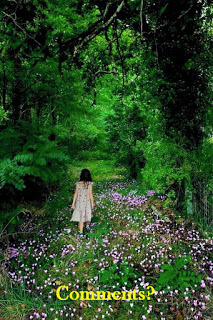
Clancy's comment: Mm ... any wonder they have fallen by the wayside?
I'm ...

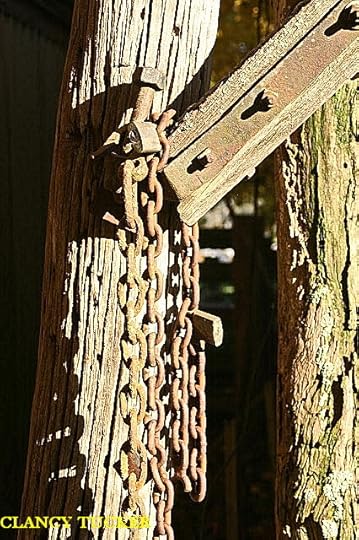
Published on May 05, 2020 15:13
May 4, 2020
5 May 2020 - AUSSIE SOLDERS CARING FOR KOALAS AFFECTED BY THE BUSHFIRES

AUSSIE SOLDERS CARING FOR KOALAS AFFECTED BY THE BUSHFIRES
G'day folks,
Countless Australians have been giving their all in the last several months to put a stop to the raging fires, whether it was going to the firefront to push away the incoming flames, or joining in the humanitarian aid and relief efforts for both people and animals in need.
Soldiers have been at the forefront. However, despite receiving well-deserved rest time between shifts, many soldiers surprisingly chose to trade in their off-time to continue helping the country recover from the bushfires. The 16th Regiment Emergency Support Force has been recently going viral after a handful of photos was seen of them cuddling and feeding koalas.
Here are some great snaps of our soldiers at work.


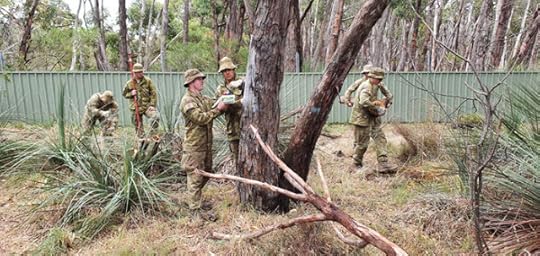

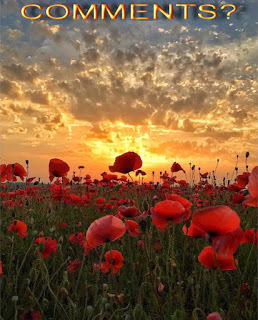
Clancy's comment: Love ya work!
I'm ...


Published on May 04, 2020 14:14
May 3, 2020
4 May 2020 - ANTUNI RUINS in ITALY
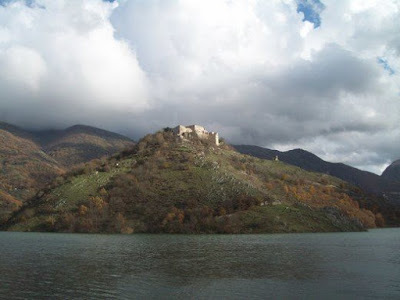
ANTUNI RUINS in ITALY
G'day folks,
A semi-abandoned village destroyed by U.S. bombings during World War II dominates the valley of Turano.
Travelers following the road along the artificial lake of Turano will notice an impressive peak overlooking the water and the nearby historical village of Castel di Tora. On top of this hill, which can be reached by a narrow isthmus, lie the remains of an abandoned village known locally as Antuni.
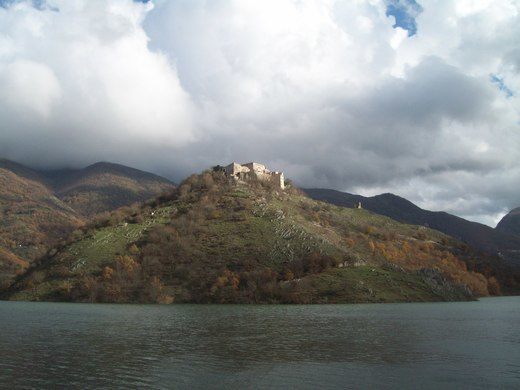
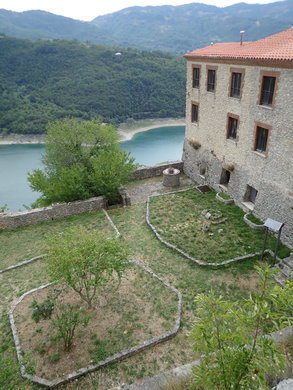 The village of Antuni is one of many historic strongholds in the valley, which was often marked by conflicts and invasions, being located on the border between the Papal States and the Kingdom of the Two Sicilies. As in other fortified places, its ownership was contested by different families over the centuries, such as the Brancaleoni, the Cesarini, the Mattei, the Lante della Rovere, and many others. In the late 1930s, the region was significantly affected by the construction of two artificial basins, Lago del Salto and Lago del Turano. Their purpose was to solve the problem of flooding in the Rieti valley as well as generate hydroelectric power. As a result, however, much fertile land was lost and the inhabitants of Antuni and other nearby towns started to abandon the region. Some of the ruins of the houses and buildings that were destroyed by the lake can still be seen from the hilltop village of Antuni.
The village of Antuni is one of many historic strongholds in the valley, which was often marked by conflicts and invasions, being located on the border between the Papal States and the Kingdom of the Two Sicilies. As in other fortified places, its ownership was contested by different families over the centuries, such as the Brancaleoni, the Cesarini, the Mattei, the Lante della Rovere, and many others. In the late 1930s, the region was significantly affected by the construction of two artificial basins, Lago del Salto and Lago del Turano. Their purpose was to solve the problem of flooding in the Rieti valley as well as generate hydroelectric power. As a result, however, much fertile land was lost and the inhabitants of Antuni and other nearby towns started to abandon the region. Some of the ruins of the houses and buildings that were destroyed by the lake can still be seen from the hilltop village of Antuni.
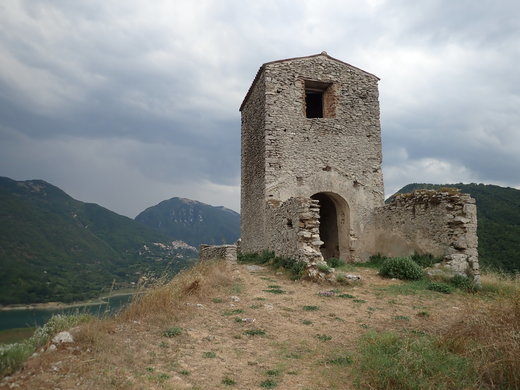
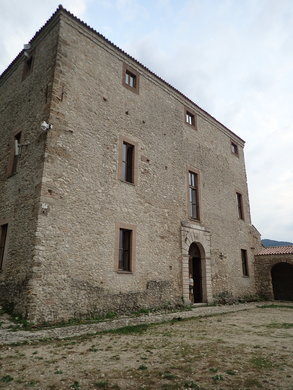
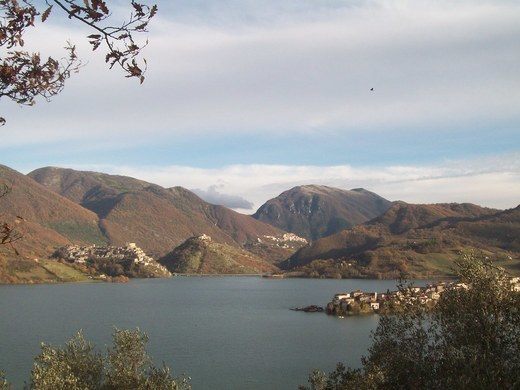
More trouble was not far behind. In the late 1940s, following a devastating bombing by U.S. airplanes during World War II (who were targeting the lake’s bridges), the village of Antuni was entirely abandoned by its remaining inhabitants. It lay in ruins for the next five decades, until the town of Castel di Tora purchased the village in the 1990s and restored some of the buildings. It turned the most impressive structure, the Palazzo del Drago, with its frescoes and 365 windows, into an art exhibition center and museum.

The museum is one of many interesting sights to explore in the area today. A short walk from the trail climbing up to Antuni also leads to the small hermitage of San Salvatore, where you can visit a cave adorned with 17th-century frescoes.
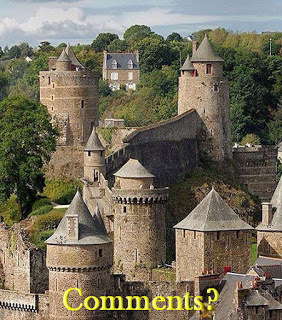 Clancy's comment: It would certainly be worth visiting.
Clancy's comment: It would certainly be worth visiting.I'm ...

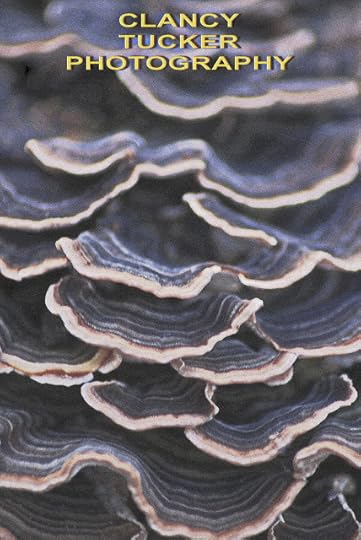
Published on May 03, 2020 15:36
May 2, 2020
3 May 2020 - 'IRON SOUP' IN CAMPBELL, OHIO
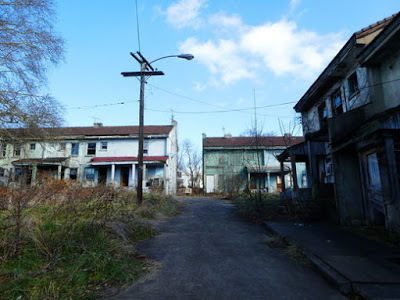
'IRON SOUP' in CAMPBELL, OHIO
G'day folks,Like all abandoned towns, there is beauty and history in the ruins of this former company town. Youngstown, Ohio and the surrounding area was once a booming industrial center. Like many cities in America’s steel-producing Midwest, it flourished until the economy began to decline in the 1970s and these once-thriving towns saw their means of income and stability suddenly eviscerated. When that industrial apocalypse occurred, sadness and ruin were left behind.
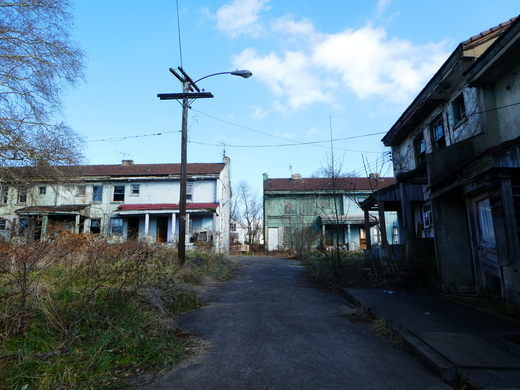
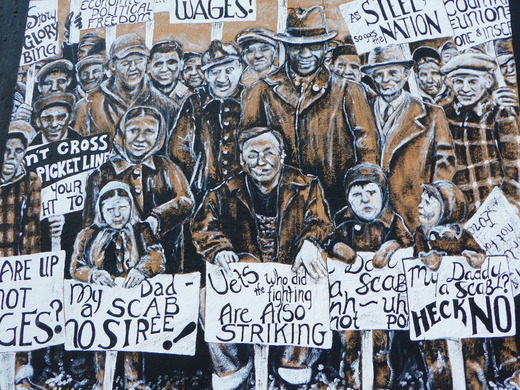
In the city of Campbell outside Youngstown, the beginning of the end came on September 19, 1977, a day forevermore known as “Black Monday.” The industrial powerhouse that was the lifeblood to the community and others around it, Youngstown Sheet and Tube, abruptly closed its Campbell Works and furloughed 5,000 workers.
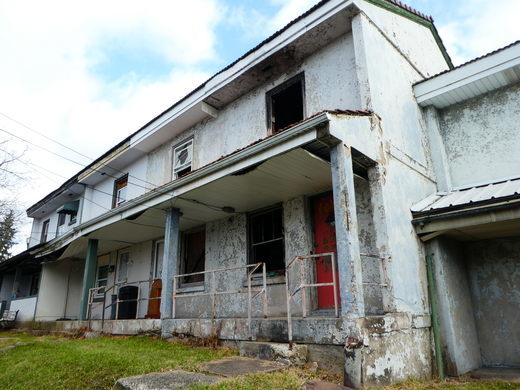

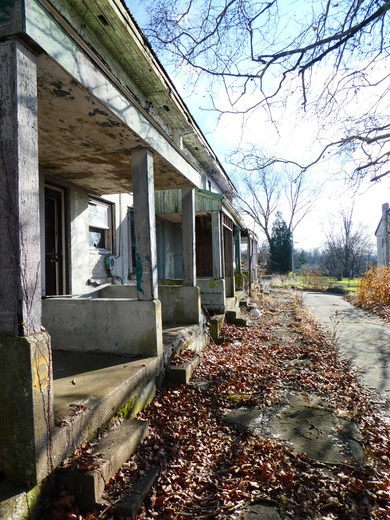
Campbell was a company town with a company store and company housing, and it was all many families had ever known. When the mills started closing, those who could leave did. Those who stayed watched in slow-motion as year after year, decade after decade, as the town got smaller and smaller.
The once-booming town has never recovered from Youngstown’s industrial demise.
Today, that old company housing still stands, mostly empty and crumbling. A few hearty individuals and families still call the area home, amidst abandoned concrete buildings, most boarded up and in serious disrepair. This area today is known as “Iron Soup.”
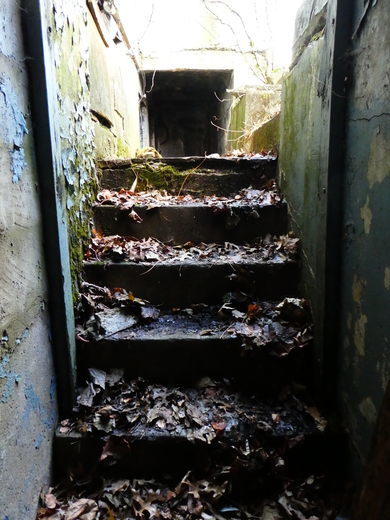
Nowadays, a group called the Iron Soup Preservation Society is working to bring the area back, one unit at a time, fixing up what can be fixed and renting out the units. The walls of the crumbling units hold amazing stories of a time now lost, and the preservation society is doing its best to help tell those stories before they are forgotten.

Clancy's comment: As you have probably gathered, these old towns fascinate me. Yep, I could visit every one of them seeking some sensational photographs.
I'm ...

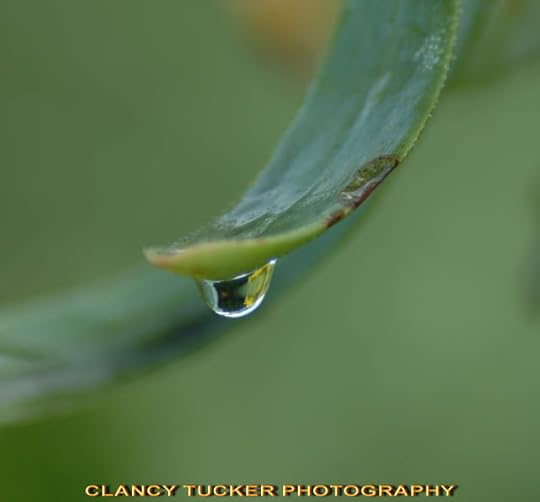
Published on May 02, 2020 15:30
May 1, 2020
2 May 2020 - A PILLNITZ CAMELLIA SURVIVES 230 YEARS IN GERMANY
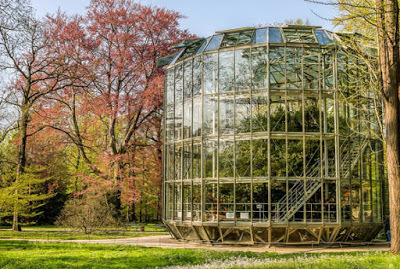
A PILLNITZ CAMELLIA SURVIVES 230 YEARS IN GERMANY
G'day folks,An engineering wonder at Pillnitz Castle protects a precious 230-year-old flowering shrub. According to legend, when the Swedish botanist Karl Peter Thunberg returned from Japan to the London Kew Gardens in 1776, he brought with him four fragile specimens of a plant that was much-hyped among Europeans those days: the Japanese camellia.


This rare and highly desired flowering plant was the highlight of the most precious royal collections and botanical gardens at the time, so much so that Kew Gardens helped strengthen political ties by sending three of the young shrubs to royal gardens in Vienna, Hanover, and Pillnitz (near Dresden).
As the story goes, the Pillnitz camellia is the only one of this fabled ensemble of plants that survived the last two centuries, as European botanists were not sufficiently aware of how to care for these sensitive trees. In 1801, the camellia was re-planted in the gardens at Pillnitz Castle, where it still grows today. But the squat little tree, which measures about 30 feet in height today, did not always have an easy life.


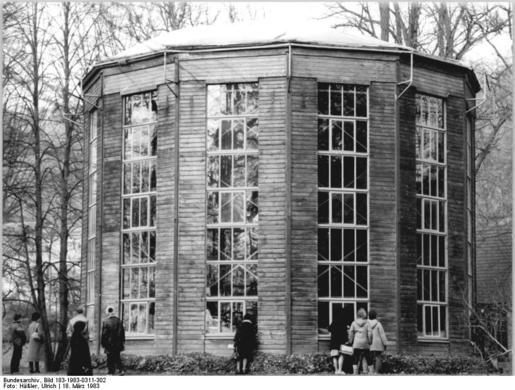
The harsh winter in the Dresden region, where temperatures reach as low as -4 degrees Fahrenheit (-20 degrees Celcius), required the garden workers’ full attention and effort. The plant survived the first winters by being covered and wrapped with straw, blankets, and mats, but later, further precautions had to be taken. To protect the camellia from the cold, wind, and snow, a wooden house was erected around the tree each fall and removed in spring.
This procedure was repeated for around a hundred years, until the wooden structure caught fire and almost burnt down the whole plant. The fire-fighting water managed to stop the flames, but froze and formed a sort of ice dome around the entire tree. Nobody believed that the tree would survive this stressful event, but the following spring the camellia started to bloom brighter than ever before.
In 1992, the delicate camellia finally received an appropriate accommodation that replaced the wooden constructions of former days. A heated, mobile glasshouse over 40 feet (13 meters) tall was erected to shelter the shrub from October to May.
The massive glass building is, technically speaking, the world’s widest broad-gauge railway, as it can be moved back and forth on a set of tracks between summer and winter. Inside the glass and steel construction, a computer automatically regulates the temperature, ventilation, and air humidity of the precious plant’s winter palace. Each year from February to April, the plant’s blossoming season, these efforts are rewarded, as some 35,000 pink flowers cover the historic camellia.

Clancy's comment: Amazing, eh?
I'm ...


Published on May 01, 2020 16:55
April 30, 2020
1 May 2020 - PANAM NAGAR, BANGLADESH - ABANDONED AFTER FIRE
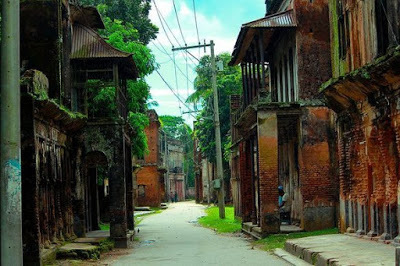
PANAM NAGAR, BANGLADESH - ABANDONED AFTER FIRE -
G'day folks,This historic textile city was abandoned after being ravaged by fire. In its heyday, Panam Nagar was home to a prosperous community of Hindu merchants that turned the medieval Bengali capital into a thriving textile trading hub in the 19th century. It’s no coincidence that the East India Company set up its permanent offices in Panam Nagar (Panam City), which was then the Bengali capital. Yet if textiles brought wealth to the town, they likely contributed to its downfall as well.



 Uncertainty surrounds the origins of the fire that razed much of the historic city to the ground, but the fact that such a large number of textiles were stored in the buildings here made the area a huge fire hazard. It is also not clear whether the Hindu community abandoned Panam Nagar before or after the rumor that the town was haunted began. What is known is that what’s left of Panam Nagar has been left derelict for decades, and locals have nicknamed it “Ghost City” and “City of the Dead.”
Uncertainty surrounds the origins of the fire that razed much of the historic city to the ground, but the fact that such a large number of textiles were stored in the buildings here made the area a huge fire hazard. It is also not clear whether the Hindu community abandoned Panam Nagar before or after the rumor that the town was haunted began. What is known is that what’s left of Panam Nagar has been left derelict for decades, and locals have nicknamed it “Ghost City” and “City of the Dead.”

Only 52 of the city’s original buildings are still standing. Most are two-story structures, standing one attached to the other along the main thoroughfare. The oldest of these buildings is said to date back to the 15th century, but most are from the 19th century. It is obvious that these were buildings made for affluent residents, judging from the colonial architecture, the thickness of the walls, and their endurance in spite of decades of neglect.
 Clancy's comment: Sad, but I'm sure it has happened all over Asia where thousands of folks work in cramped areas to earn a pittance.
Clancy's comment: Sad, but I'm sure it has happened all over Asia where thousands of folks work in cramped areas to earn a pittance.I'm ...


Published on April 30, 2020 14:43
April 29, 2020
30 April 2020 - PASTOR DAVID PARRY - GUEST AUTHOR

PASTOR DAVID PARRY - GUEST AUTHOR -
G'day folks,
Here is my interview with a charming author who just happens to be a pastor as well.
Welcome, David ...
1. TELL US A LITTLE ABOUT YOURSELF AND YOUR WRITING JOURNEY.
Gosh, this form of literary “confession” is always embarrassing, since I am never sure of the parameters, or proprieties, surrounding personal disclosure. Either way, I am a nascent Swedenborgian, albeit one ordained and consecrated as a Valentinian bishop. Equally, I am a rather well-known “theatrical poet” with pronounced Pagan tendencies, a lifelong LGBTQ activist and ardent Libertarian currently living in Clapham, South London.
However, I am a country boy at heart. A man who was born in Portsmouth, while being raised in Fareham, Hampshire. Phrased differently, I grew up in a small market town between the British cities of Southampton and Portsmouth in a rustic and occasionally idyllic environment: a landscape suited to the sensibilities of a fledgling poet. Indeed, as a continuous truant from school, I recall taking books of Roman poetry to the water meadows near my grandmother’s house and reading them with an increasingly voracious appetite for global literature.
So recalled, I started to write my own “poetic notes” by the age of seven, even though I hadn’t composed anything of aesthetic worth until my late teens. Overall, a questing adolescent period wherein I developed a passion for Russian novels, along with an infrequent addiction for the staggeringly evocative verse originating from Central Asia. With hindsight, each influence inspiring steps on a long literary journey.
2. WHEN AND HOW DID YOU BECOME A WRITER?
As William Burroughs once said, “a writer just writes”. And as such, I can’t really say I was following any type of plan, or for that matter aiming to achieve a goal. Rather, I simply kept detailed notes of concepts and images from other authors, as well as describing to myself what I would like to eventually accomplish on a stage – in terms of character, script, plot, colours, sets and atmosphere. Oddly, it was a number of years before I could see the connection between our British boards and native lyricism. Anyway, I owe my “when” and “how” to notebook after notebook after notebook.
3. WHAT TYPE OF PREPARATION DO YOU DO FOR A MANUSCRIPT? DO YOU PLAN EVERYTHING FIRST OR JUST SHOOT FROM THE HIP?
I am old school. So, I plan everything in meticulous detail before I commit to composition. That stated, I have tried to experiment with spontaneous penmanship for the last few years, although I know myself well enough to spot the subtle, preconceived, designs inside my own “impulsive” encounters with the subconscious. Yet, this is just me. There are no hard and fast rules.
4. WHAT DO YOU ENJOY MOST ABOUT BEING A WRITER?
I hate every single minute of the writing process. Nonetheless, if I do not do it, I am not David. In which case, the only point I truly enjoy is reaching a deadline, or finishing a project.
5. WHAT IS THE HARDEST THING ABOUT BEING A WRITER?
For me, authorship is analogous to an unpleasant regurgitation, or a necessary, but uncomfortable, purgation. It is the need to express, or expel, concepts, while thereafter feeling a sense of temporary relief. Hence, these agitations, accompanied by the loneliness (not to mention the distress attendant on any release of text into an insensitive world), prove the most disagreeable experiences for me.
6. WHAT WERE YOU IN A PAST LIFE, BEFORE YOU BECAME A WRITER?
Being honest, there never was a time before I became a writer. Authorship, like my struggle with a homophobic, sexist, elitist and racist Church, was something I always did in parallel with my other duties. Therefore, in a manner similar to the Beatniks, I have been employed in an endless number of positions including: Postman, Paper-keeper, Security Guard, Gardener, Office Clerk and English language (Academic IELTS) Teacher.
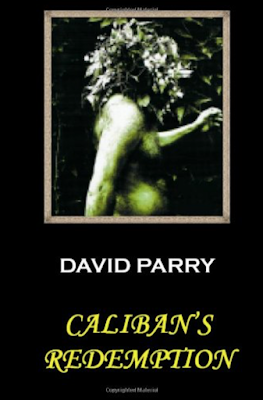
7. WHAT IS YOUR GREATEST WRITING ACHIEVEMENT?
My dream as a writer was to collaborate with Central Asian poets and dramatists. So, being elected as the first Chairman of Eurasian Creative Guild (slightly before this organisation subdivided into various national associations), allowed me to realise my ambition and travel across a number of the “Stans” to meet with colleagues from these magical terrains. Thus, incorporating each encounter into my own authorship is the greatest attainment.
8. WHAT ARE YOU WORKING ON AT THE MOMENT?
Currently, I am working on another collection of essays. A challenging, albeit genuinely satisfying genre I am hoping to help revive due to its unique resonance with travel writing in theory and practice. Instead of a geographical location, however, this time I will be examining the arts and mysticism of Nicholas Roerich – a Russian author, painter, writer, theosophist, archaeologist and probable spy.
9. WHAT INSPIRES YOU?
Art, Nature, Christ, Transcendentalists, Eurasia.
10. WHAT GENRE DO YOU WRITE?
Almost everything I compose is in prose-poetry. Unless, of course, I am forced into mere prose for an assignment of some sort.
11. DO YOU HAVE ANY TIPS FOR NEW WRITERS?
Don’t embark on this path unless the rest of life is impossible without it. If, however, this bilious route proves inescapable, always have a notebook to hand and explore concepts and situations from every imaginable angle.
12. DO YOU SUFFER FROM WRITER’S BLOCK?
Thinking back, I never really understand what people are implying when they claim these types of hurdle to their work. However, I can sympathise with the pain caused by endless delays, as well as financial stress.
13. DO YOU HAVE A PREFERRED WRITING SCHEDULE?
Nowadays, I am a morning person. I used to be a night owl, but recently nothing is doable without my coffee and almond croissant first thing; along with the renewed vigour of a fresh day to tackle text.
14. DO YOU HAVE A FAVOURITE WRITING PLACE?
Sadly, yes. I tend to be at my least neurotic and creative when writing in the front room of my tiny ground floor flat. I must be completely alone during these hours, with my notebooks nearby and my laptop immediately in front of me.
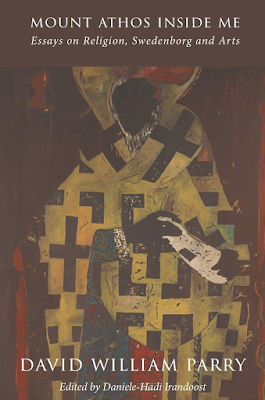
15. WHAT IS YOUR GREATEST JOY IN WRITING?
Finishing the final page with an openly lyrical note.
16. WHO IS YOUR FAVOURITE AUTHOR AND WHY?
Shakespeare, since as Wittgenstein (a close second) claimed, he gives his admirers the world.
17. WHAT’S THE GREATEST COMPLIMENT YOU EVER RECEIVED FROM A READER?
I was once told that my versicles are vibrant, spiritually transformative and genuinely beautiful.
18. WHAT WAS THE WORST COMMENT FROM A READER?
An accusation of wilful obscurity was once thrown at me. Obviously, the perpetrator did not survive in one piece.
19. WRITERS ARE SOMETIMES INFLUENCED BY THINGS THAT HAPPEN IN THEIR OWN LIVES. ARE YOU?
All in all, I am never sure that every type of text is not some kind of biographical assertion. However, my childhood and isolated adolescence in Hampshire still exert a potent power across my work.
20. OTHER THAN WRITING, WHAT ELSE DO YOU LOVE?
Travelling to Central Asia and physically walking in the footsteps of Abai, Aladdin and Chinghiz Aitmatov are thrilling experiences for me to this day. The landscapes are breathtakingly beautiful, the food is fresh and flavoursome, while the people’s are naturally friendly. Indeed, the admixture of Turkish and Chinese cultures seems to bring out the best features of both worlds.
21. DID YOU HAVE YOUR BOOK / BOOKS PROFESSIONALLY EDITED BEFORE PUBLICATION?
As the very worst proof reader for my own work in this or any other possible world, I always ask one of my contacts (usually Daniele-Hadi Irandoost) to edit my work. He has an immense skill, at the same time as knowing me personally. Overall, this admitted, I would not trust my materials to someone I do not know no matter how experienced.
22. DESCRIBE YOUR PERFECT DAY.
My fantasy is to breakfast on hot chocolate and pastries among the blue tiles and turrets of Samarkand. Following this, to take afternoon minted tea with friends discussing Eurasian poetry, before banqueting in the evening amidst books, endless dishes of local cuisine (including Plov) and respected colleagues.
23. IF YOU WERE STUCK ON A DESERT ISLAND WITH ONE PERSON, WHO WOULD IT BE? WHY?
Provided he is naked and prohibited from wearing any clothes whatsoever for the duration of our incarceration, it must be Tom Hardy. He pushes all of the “thug with a brain” buttons.
24. WHAT WOULD YOU SAY IF YOU HAD THE CHANCE TO SPEAK TO WORLD LEADERS?
As someone who has contacts in our British Parliament and has had a scene from a play of mine premiered in the House of Lords (making history), I would love to say just one thing – please try to remember there are living, sentient and breathing, people outside the political classes.

25. WHAT ARE YOUR PLANS FOR THE FUTURE?
To have more of my work dramatized and staged. As someone who occasionally acts, I would additionally like to play some of the peripheral, but vital, characters in one of these productions.
26. WHAT ARE YOUR VIEWS ON BOOK TRAILERS? DO THEY SELL BOOKS?
I do not really have an opinion on this topic, but as Malcolm X said “by all means necessary”.
27. DO YOU SEE YOURSELF IN ANY OF YOUR CHARACTERS?
Caliban was the emotional protagonist in my two volumes of prose-poetry. In one sense, (as a nascent misfit) I am him, even though in another he is very far from my etheric shape and astral form.
28. DOES THE PUBLISHING INDUSTRY FRUSTRATE YOU?
The so-called publishing industry is run by self-seeking simpletons who will never understand the real nature of serious literature – and do not really care about that fact. Apart, that is, from Gwendolyn Taunton and Manticore Press in Australia.
29. DID YOU EVER THINK OF QUITTING?
No, although I frequently think of relocating to the continent of Europe. My only troubles being that France and Italy are too perfect, while my beloved Spain is too hot in the summer months.
30. WHAT WAS YOUR FAVOURITE MANUSCRIPT TO WRITE? WHY?
Without doubt, my unpublished manuscript on Andy Warhol and the theology of banality has become my favourite project to date.
31. HOW WOULD YOU DEFINE ‘SUCCESS’ AS A WRITER?
Winning the Nobel Prize for Literature. Or, failing this, reaching an exceedingly wide readership characterized by their discerning minds and ethically-informed hearts. Hey, a man can have dreams. 32. WHAT SHOULD READERS WALK AWAY FROM YOUR BOOKS KNOWING? HOW SHOULD THEY FEEL?
They should know how much they don’t know, along with intuiting how much I do not know. I suppose I want them to feel philosophically frustrated, as well as aware of natural aesthetics in the world around us, accompanied by the potentials inherent in every transcendental form of artistry.
33. WOULD YOU LIKE TO HAVE YOUR BOOKS MADE INTO MOVIES? EVER WRITTEN A SCREENPLAY?
Overall, I do not think much of movies as they always seem missed opportunities artistically. That confessed, I may explore a screenplay of the life of Artaud next year.
34. HOW MUCH THOUGHT GOES INTO DESIGNING A BOOK COVER?
Annoyingly, a great deal of time and energy goes into the designs of my book covers. In this regard, I have been fortunate enough to find good friends in the artistic community who have collaborated with me in an attempt to signal the core concepts within a specific work.
35. WHAT’S YOUR ULTIMATE DREAM?
To attain Higher Consciousness, a free imagination and be the author of at least one hundred Conceptualist books.
36. WRITING IS ONE THING. WHAT ABOUT MARKETING YOU, YOUR BOOKS AND YOUR BRAND? ANY THOUGHTS?
I have learnt to my detriment that without good distribution and appropriate marketing even the best of books stay inert in storage. Equally, branding is one of the productive evils of our modern age: both in terms of the work and the author. Personally, I find all of this extremely difficult, but to sell books nowadays, these are essential factors in any professional venture.

37. ARE YOUR BOOKS SELF-PUBLISHED?
I have never investigated self-publishing, although I did release a limited series of privately published poetry pamphlets (A Black Rose on the Alter) for friends and colleagues interested in my work after moving to London in the early 80’s. All very traditional, of course, amongst dissenting wordsmiths in our UK.
38. DESCRIBE YOURSELF IN FIVE WORDS.
A squat, ugly, overweight, dwarf.
39. WHAT PISSES YOU OFF MOST?
Social media.
40. WHAT IS THE TITLE OF THE LAST BOOK YOU READ? GOOD ONE?
Curiously, it was “The Aesthetic Education of Man” by Friedrick Schiller. It is lucid, insightful and a strangely compelling text for our era in a way I hadn’t expected. To my mind, an exceedingly important read throughout the centuries.
41. WHAT WOULD BE THE VERY LAST SENTENCE YOU’D WRITE?
As a Pastor, I have tried to be an all-round good egg, a Conceptualist poet and a great lay.
42. WHAT WOULD MAKE YOU HAPPIER THAN YOU ARE NOW? CARE TO SHARE?
Selling 70 million books like Frederick Forsyth, or actually being able to make a reasonable living out of poetry.
43. ANYTHING YOU’D LIKE TO ADD?

WEBSITE

Clancy's comment: Well done, David. Sad about the dark print but I'm a forgiving man. Good luck.
I'm ...


Published on April 29, 2020 15:41
April 28, 2020
29 April 2020 - KAISER QUARRY RUINS IN CALIFORNIA
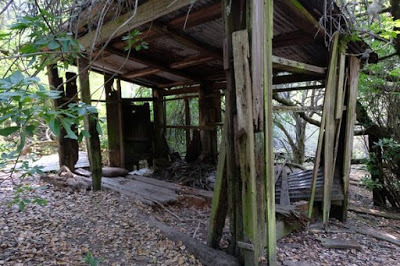
KAISER QUARRY RUINS IN CALIFORNIA
G'day folks,
Once again, I've found another business that has been overtaken by a forest. An abandoned car and strange wooden debris are among the scattered remains of the old sand and gravel quarry.
Visitors to the Sibley Volcanic Regional Preserve know it for its staggering geological history, incredible views, and the famous Mazzariello Labyrinth at the peak of Round Top Trail.
But not many know that the preserve was once used as a Kaiser Sand and Gravel quarry, during the boring of the Caldecott Tunnel between 1929 and 1937. The Mazzariello Labyrinth itself is located in an old quarry, which is why the earth around it is exposed.

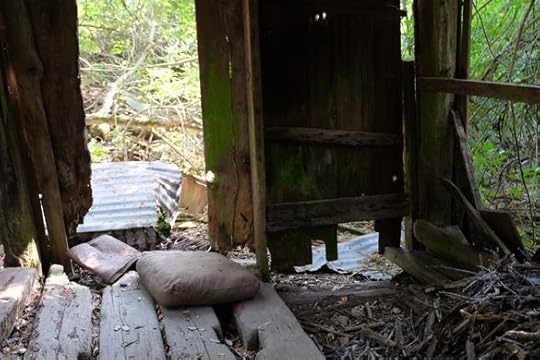

In 1936, the quarry was transformed into one of the first three East Bay Regional Parks, Round Top Park. It remained as Round Top Park (named after Round Top peak, formed by volcanic debris) until 1958, when it was renamed Sibley Regional Volcanic Preserve in honor of Robert Sibley, one of the founders of the parks.

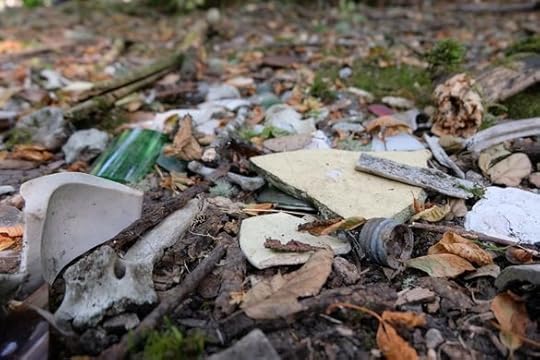
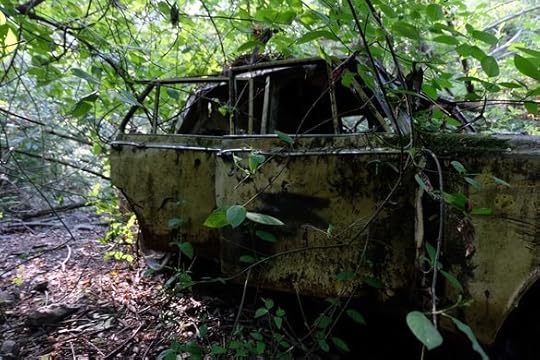
Today, a few scattered artifacts recall a time when the area was a bustling quarry. An abandoned 1971 Opel 1900 Sedan is gnawed away by the elements, likely the ruin of a tumble off the old quarry road years after it had been out of use. The road was later converted into a trail and some bits of the old concrete can still be made out as you walk the path.

Further down the trail is a type of wooden stable structure of uncertain origin, along with industrial debris including pipes, tin roofing, barrels, chairs, bits of ceramic and glass, and the remnants of past structures. There are also some spookier finds at the site, including pillows and stacked cow bones. Perhaps a werewolf curls up here at night?

Clancy's comment: Another place to visit with my camera.
I'm ...


Published on April 28, 2020 15:57
April 27, 2020
28 April 2020 - THE FAMOUS TOBLERONE LINE in SWITZERLAND

THE FAMOUS TOBLERONE LINE in SWITZERLAND
G'day folks,This long line of cement defensive wedges is named after the famous chocolate bar for obvious reasons. During World War II, Switzerland was in a uniquely tough spot amidst the seats of fascist power such as Germany and Italy. Shoring themselves up against possible invasion, the country created the Promenthouse Line, which still exists today under a much sweeter name - the Toblerone Line.


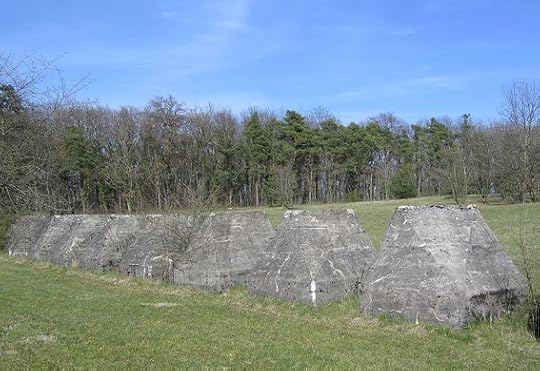 The Promenthouse Line is a long trail of anti-tank defenses that consisted of 12 fortresses linked by miles of cement wedges known as “dragon’s teeth.” Running from the Jura mountains to Lake Geneva, the line was more of an inconvenience than a wall. The 16-ton hunks of concrete presented an impassable obstacle for tanks but could easily be destroyed by explosive ordnance. Luckily the defenses never needed to be tested, and the trail of stone teeth remains to this day.
The Promenthouse Line is a long trail of anti-tank defenses that consisted of 12 fortresses linked by miles of cement wedges known as “dragon’s teeth.” Running from the Jura mountains to Lake Geneva, the line was more of an inconvenience than a wall. The 16-ton hunks of concrete presented an impassable obstacle for tanks but could easily be destroyed by explosive ordnance. Luckily the defenses never needed to be tested, and the trail of stone teeth remains to this day.While there have been motions to dismantle the defensive line, it still survives to this day, albeit by a different name. Thanks to the defense’s resemblance to the distinctive Swiss chocolate bar, Toblerone, the increasingly moss-covered dragon’s teeth have taken the company’s name for their own.

A Toblerone trail has even been built up along some portions of the line, with paths and stairs for hikers and bikers. Visitors can also visit some of the fortresses along the way.
 Clancy's comment: Wow. Each block weighed 16 ton!
Clancy's comment: Wow. Each block weighed 16 ton!I'm ...


Published on April 27, 2020 14:25



